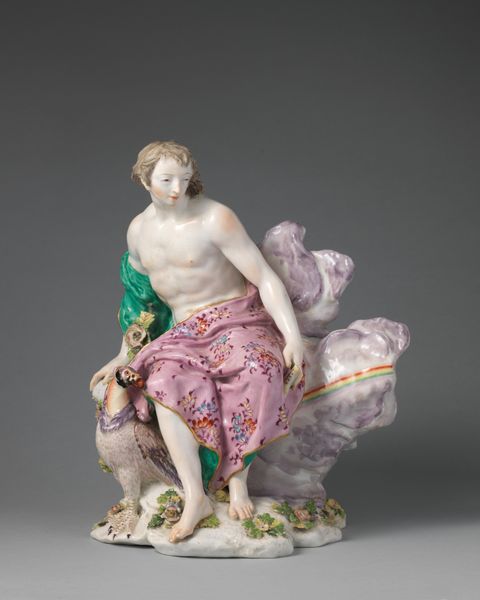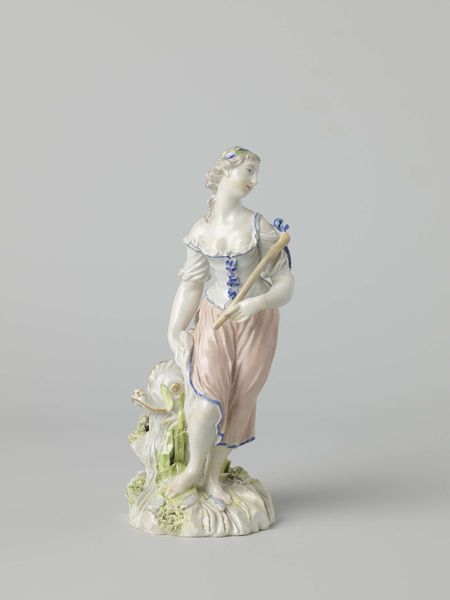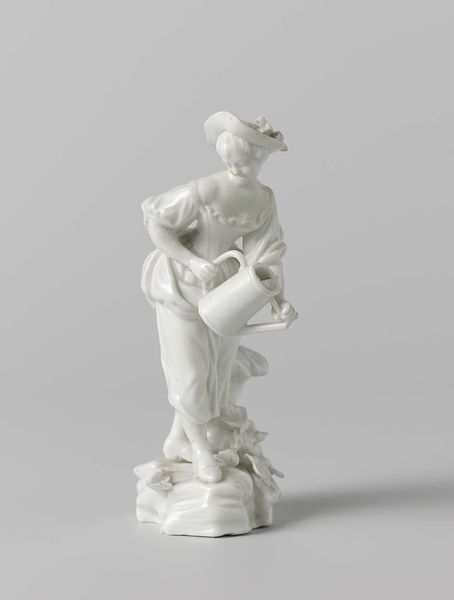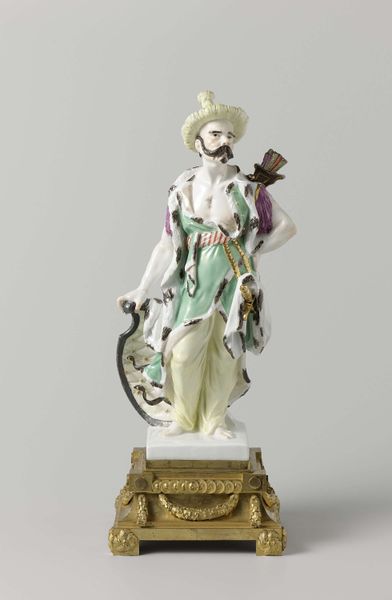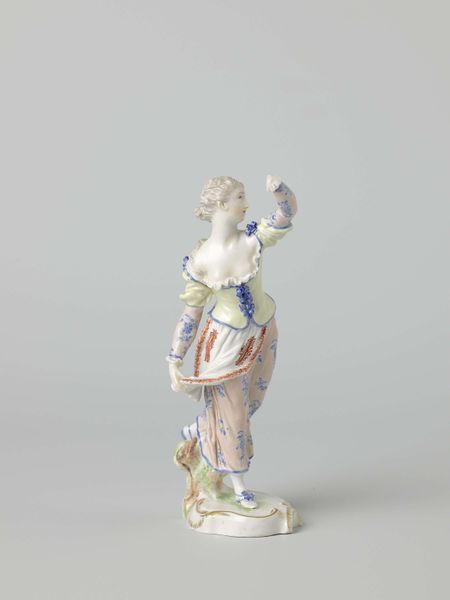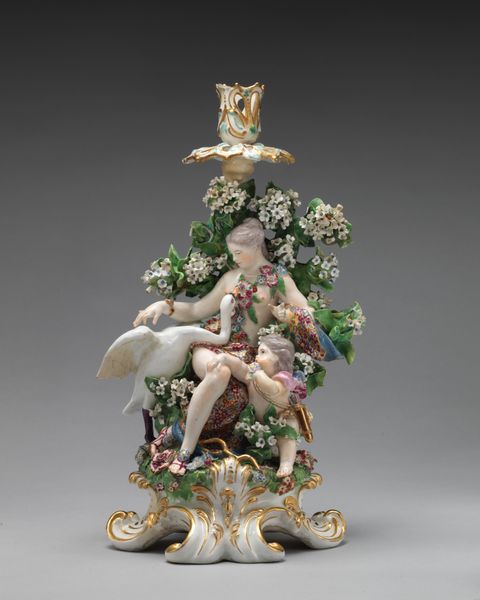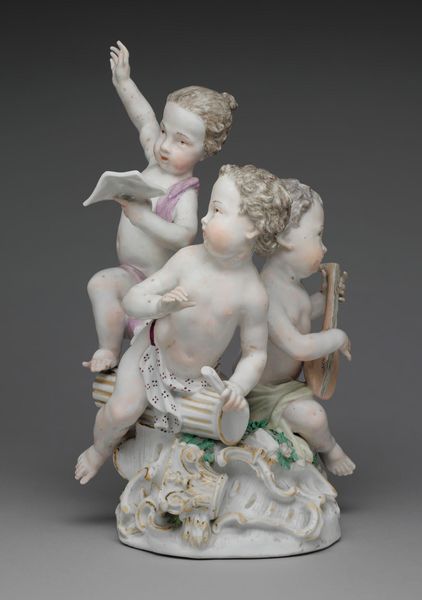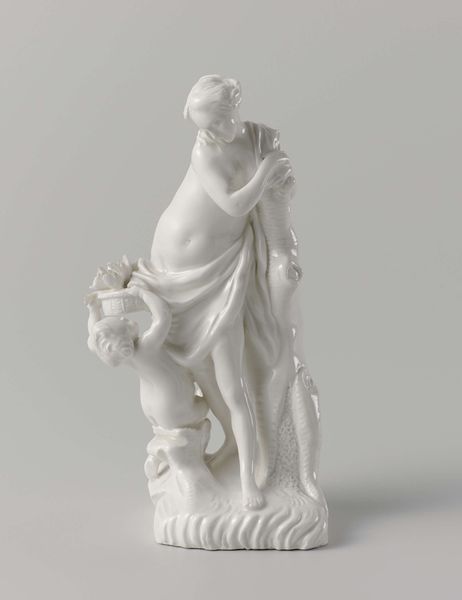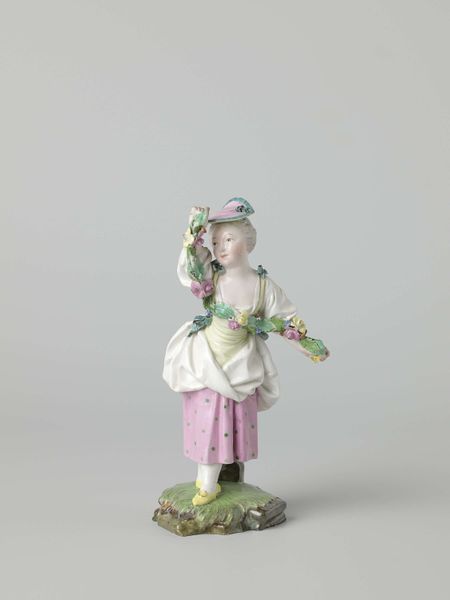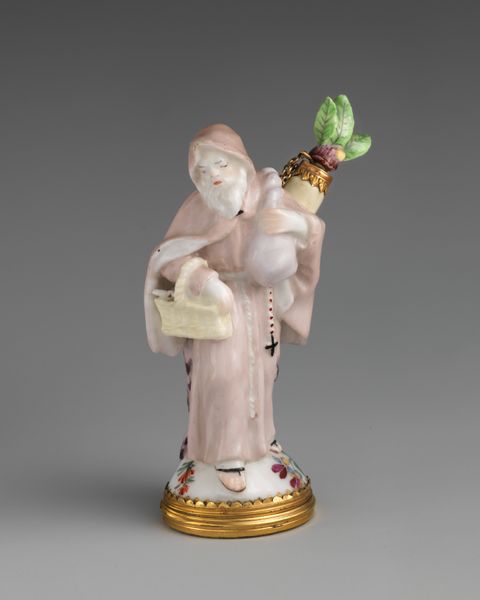
porcelain, sculpture
#
allegory
#
classical-realism
#
porcelain
#
figuration
#
sculpture
#
rococo
Copyright: Rijks Museum: Open Domain
"Venus and Mercury" was created by Wilhelm Caspar Wegely in the 18th century, during the height of the Rococo movement. Rococo was a style known for its ornamentation and asymmetry, which was a visual expression of the aristocratic class’s desire for beauty. Wegely’s porcelain figurine depicts Venus, the goddess of love, alongside Mercury, the messenger of the gods. Their divine status reflects the fascination with classical mythology at the time. The artist's choice to represent Venus partially nude adheres to traditional representations while hinting at a more sensual narrative. Mercury's presence introduces themes of communication and intellect. The delicate floral patterns adorning Venus’s drapery and the overall pastel palette, enhance the figurine's elegance, characteristic of the Rococo era. This piece not only embodies the aesthetic preferences of its time but also speaks to the enduring human fascination with love, beauty, and the divine.

